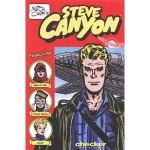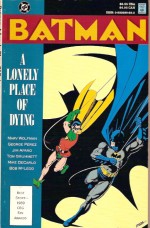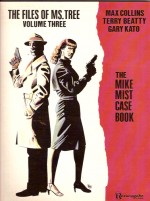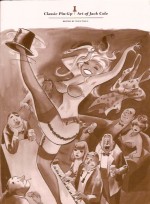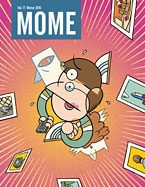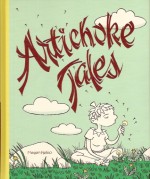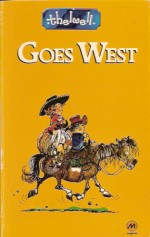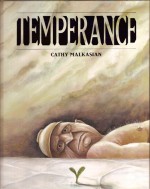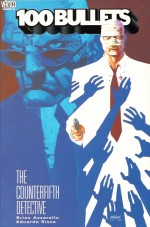
By Brian Azzarello & Eduardo Risso (Vertigo)
ISBN: 978-1-84023-467-1
All societies have policemen and the kind of cop absolutely depends on the kind of society. When that society is utterly secret and consists of thirteen ruthless criminal dynasties that have covertly controlled America since Columbus landed, the kind of peacekeeper needed to keep them honest and actively cooperating has to be a man uniquely honest, smart and remorseless.
Such a man is Agent Graves…
Beginning as one of the best crime-comics in decades, 100 Bullets gradually, cunningly transformed itself into a startlingly imaginative conspiracy thriller of vast scope and intricate intimate detail. With this fifth volume (collecting issues #31-36 of the much missed adult comic book) close followers might assume they finally have a handle on what’s going on, and how the characters are shaping up but once more Azzarello and Risso have plenty of surprises to unleash and chairs to kick out from under us…
Milo Garrett is trouble: brooding, violent and always looking for a fight. That’s not the best résumé for a private investigator, but it gets Milo through the nights and through the week. However his soul-deadened life a takes a decidedly strange turn when he wakes up in a hospital bed with his face bandaged like a mummy. Being a tough guy doesn’t help much when you’re catapulted through a speeding car windscreen…
He has a visitor: a sleek old gentleman named Graves who offers him a briefcase with an untraceable gun, 100 bullets and a dossier on just how he got there. What Graves doesn’t offer is any answers…
Psychotically independent, ever-suspicious and always spoiling for another drink and another fight Garrett revisits the case he was working on. He was hired to recover a stolen painting, but when his client is murdered he knows he’s stepped into something big and dirty. Unable to let go he digs deeper and finds the ultra-rich Megan Dietrich (see 100 Bullets: First Shot, Last Call) up to her neck in something that clearly terrifies her: something that scares everybody connected to this case…
As the body-count mounts Graves’ reawakened “Minutemen†surface, and although Garrett doesn’t know it yet he is caught between a centuries-old criminal cabal and the squad of paramilitary peacekeepers they betrayed and (they believed) destroyed.
Events spiral as monstrously ambiguous hitman Lono stalks his next – unspecified – target and once Milo finally sees the mysterious painting which apparently reveals a hidden secret of the criminal Trust that runs America, the detective is pretty sure of the only way this mess can end…
Deeply unsettling yet spectacularly compelling this yarn turns the hardboiled gumshoe genre on its head as it weaves a unique web of intrigue that gradually built into a monolithic saga of institutional corruption and personal honour. The unfolding saga remains an astoundingly accessible and readable thriller as the mystery of the Trust is revealed and Agent Graves begins the final stage of a plan decades in the making: 100 Bullets promises that the best is already here, but even better is waiting…
Entertainment-starved story fans – grown-up, paid-up, immune to harsh language and unshaken by rude, nude and very violent behaviour – should make their way to their favourite purveyor of fine fiction immediately and get every one of these graphic novels – at all costs.
© 2002 Brian Azzarello, Eduardo Risso and DC Comics. All Rights Reserved.


